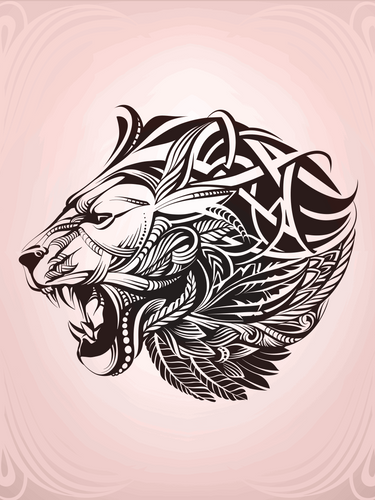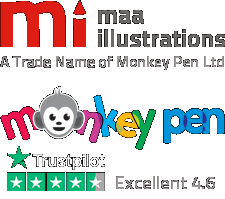A significant revolution is taking place in the field of medical illustration as 3D rendering is increasingly being used in place of the static, two-dimensional images that have long dominated the industry. Medical practitioners, educators, and patients are all interacting with and understanding complicated medical concepts in entirely new ways because to this ground-breaking technology. The numerous and beneficial uses of 3D rendering in medical illustration are examined in this article.
1. Anatomical Visualization:
One of the most significant advantages of 3D rendering in medical illustration is the level of anatomical precision it offers. Medical illustrators can build extremely accurate and realistic anatomical models using 3D rendering software, which makes it simpler for students and healthcare professionals to understand the spatial relationships between organs, tissues, and structures. Unprecedented detail is added to human anatomy through 3D rendering. Anatomical structures like the heart, brain, or skeletal system can be modelled in 3D with incredible accuracy and interactivity by medical illustrators. These models are crucial for medical education because they let experts and students examine the human body from a variety of perspectives. They are able to analyze digital cadavers, comprehend spatial relationships, and have a profound understanding of the complex structure of human anatomy.
2. Surgical Planning and Simulation:
Surgical planning and invention have both been changed by 3D rendering. On the basis of medical imaging data, such as CT scans or MRIs, surgeons can now request patient-specific 3D models. These models accurately depict the particular anatomy and pathology of each patient. Having a 3D model accessible is essential for difficult surgeries, especially those involving tumours, abnormalities, or rebuilding. In order to more accurately arrange the procedure and shorten operating time, surgeons can analyze the model before entering the operating room. Because it enables surgeons to practice and perfect their technique in a risk-free virtual environment, this technology is especially useful for planning complex surgeries, such as orthopedic or neurosurgery treatments. Thus, surgical accuracy is increased, complications are decreased, and patient outcomes are finally improved.
3. Patient Education:
In medical illustration, patient education is one of the most important uses for 3D rendering. Complex medical disorders and available treatments can be difficult for patients to understand. Effective teaching resources include 3D models and animations. It can be intimidating and difficult for individuals to deal with medical treatments and problems. Between medical terms and patient understanding, 3D rendering fills the gap. Medical illustrators are capable of producing 3D simulations of particular illnesses, disease mechanisms, and therapeutic choices. A 3D-rendered model of the heart can be used to describe the issue, the suggested treatment, and the anticipated results when a patient is diagnosed with a complex ailment, such as a cardiac abnormality. Using interactive 3D graphics, doctors may clearly and easily communicate medical diagnoses, treatments, and potential hazards to patients. Patients are better able to decide on their own care by being able to visualize their own anatomy and health problems, which strengthens the patient-doctor interaction.
4. Design of Medical Devices:
Dynamic educational tools in healthcare have been made possible by 3D rendering. Today, multimedia applications and 3D animations are used by medical educational institutions to engage students and professionals in learning. With the use of these tools, users can rotate, zoom in, and even replicate different medical operations with 3D models. By streamlining the prototyping and testing processes, this technology shortens the development process and lowers expenses. Additionally, it makes it easier to modify devices to meet each patient's specific anatomical requirements. Medical students can rehearse surgical procedures online before using them on real patients, for instance, using an interactive 3D-rendered application.
5. Disease Progression and Visualization:
The ability to show disease processes in 3D with extraordinary clarity. The development of tumours, the evolution of osteoarthritis, or the effects of neurodegenerative illnesses on the brain can all be visually represented by medical illustrators. Due to their ability to shed light on illness mechanisms and their effects on the body, these 3D models are invaluable for research, diagnostics, and patient education.
6. Drug discovery and pharmaceutical study:
Pharmaceutical development and drug discovery depend heavily on 3D rendering. It is used by researchers to simulate how medications and biological substances interact. This supports the investigation of molecular pathways and the discovery of prospective therapeutic candidates. It can make it easier to see how drug delivery systems work inside the body.
In conclusion, the use of 3D rendering in medical illustration has completely changed how we view and engage with difficult medical terms, anatomical details, and disease processes. The future of healthcare and medical knowledge is being shaped by this technology, which is a potent instrument for everything from surgery planning to patient communication to education. The possibilities for 3D rendering in the field of medical illustration are endless as it develops and becomes more widely available, offering more accurate diagnoses, safer operations, and better-informed patients.






